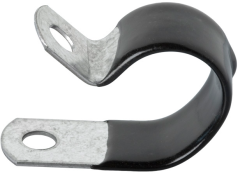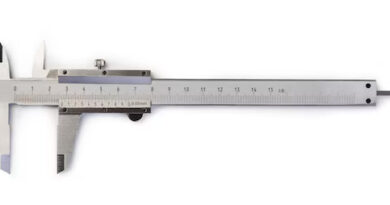Everything You Need To Know About Electric Wire Clamps
Wire clamps are tools designed to hold electrical wires in place and keep them from moving around or coming apart. They are typically made of metal and can be tightened around the wires with a screw or nut. They can also be used to secure wires to a surface such as a wall or ceiling. Electric Wire clamps can be used to organize multiple wires and maintain a safe, organized wiring system.
Types of Electric Wire Clamps
Screw Clamps
This type of electric wire clamp is one of the most common. It typically consists of two metal plates held together by a screw, allowing the user to tighten the clamp around the electrical wire.
Spring Clamps
Spring clamps are typically used to secure smaller electrical wires and cables that require a more precise fit. This type of electric wire clamp has a set of metal plates that are connected by a spring, allowing the user to easily adjust the clamp around the wire.
Hose Clamps
Hose clamps are commonly used with larger electrical wires and cables. This type of clamp consists of two metal bands that are connected by a screw, allowing the user to tighten the clamp around the wire.
Cable Ties
Cable ties are often used to secure a bundle of electrical wires and cables. These clamps consist of a plastic band that can be tightened around the wires or cables.
Specifications
- Material: The electric wire clamps can be made of different materials, including plastic, rubber, metal, and other materials depending on the type of clamp and the purpose.
- Size: The size of the clamp will depend on the type and size of the wire it is used to hold. Smaller clamps are used to secure smaller wires, while larger clamps can secure larger wires.
- Design: Electric wire clamps come in different designs, such as double-screw, single-screw, and swivel designs. The type of design will depend on the application and the wire size.
- Tensile Strength: The electric wire clamp must have a high tensile strength in order to securely hold the wire. Different materials have different tensile strengths, so it is important to choose the right material for the job.
- Corrosion Resistance: The material of the clamp should be corrosion-resistant in order to protect the wire from damage.
Environmental Parameters of Electric Wire Clamps
The environmental parameters of electric wire clamps depend on a variety of factors, including the type of clamp, the materials used, and the environment in which the clamp is used. Common environmental parameters include temperature, humidity, and vibration. Temperature is important because it affects the strength and flexibility of the materials used in the clamp. Humidity can cause corrosion of the metals used in the clamp, and vibration can cause the clamp to loosen or break. Additionally, the environment in which the clamp is used can also affect its performance, such as the presence of salt water or extreme temperatures.
Structural Parameters of Electric Wire Clamps
The structural parameters of electric wire clamps vary depending on the specific type of clamp used. Generally, the parameters include the clamp’s material, size, shape, and strength. Additionally, other design features such as the number of screws, type of screw head, and the depth of the screw hole may also be taken into account. Some of the most common materials used for electric wire clamps are stainless steel, aluminum, and plastic. The size of the clamp will depend on the size of the wire being secured. The shape of the clamp will depend on the application and the type of wire being secured. Finally, the strength of the clamp is determined by how securely it can hold the wire in place.
Tips for Choosing the Best Electric Wire Clamps for Your Applications
- Know your application: First, you should identify the type of cable clamp you need for your application. Are you looking for a clamp to hold a single cable or multiple cables? Are you looking for a clamp to attach a cable or bundle of cables to a wall or other surface? Are you looking for a clamp with adjustable tension or a fixed tension? Knowing the answers to these questions will help you determine the type of cable clamps you need for your application.
- Consider the material: Cable clamps are typically made from either plastic or metal. Plastic clamps are lightweight and more affordable, but may be less durable than metal clamps. Metal clamps are more durable and can be used in more extreme conditions, but may be more expensive. Depending on the environment and the type of cables you need to secure, you may need to choose one material over the other.
- Consider the material: Cable clamps are typically made from either plastic or metal. Plastic clamps are lightweight and more affordable, but may be less durable than metal clamps. Metal clamps are more durable and can be used in more extreme conditions, but may be more expensive. Depending on the environment and the type of cables you need to secure, you may need to choose one material over the other.




